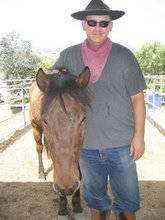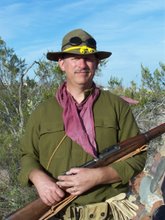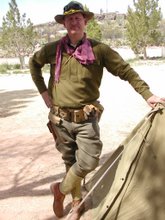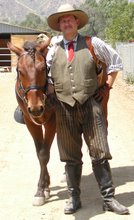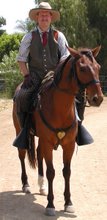With having classes three days a week (more about that later), my time with Max has been somewhat limited so my riding days are usually Saturday, Sunday, Thursday and occassinally Monday (depending on how the furlough day falls).
Of late, I've been working a lot on making Max more sensitive to my leg in general and working on my transitions and collection. It hasn't been easy but it seems that Max is coming along although he does have his days. Usually it takes a few minutes to get Max sufficiently "woken up" so he's paying attention and not just going through the motions (he's good at BSing his way through work if you let him).
Also, I've been working hard on collecting up Max and making him work on his haunches more. Sometimes it's really tough and he doesn't seem to readily get the message- this is especially noticeable in collected canters. No doubt, it's more about where I'm positioning my body than anything else but sometimes it feels like I'm holding him in with tight reins against the bit. When things are going well, he seems to pick up on the idea so I don't have to maintain constant pressure or use as much pressure. The key is to not use any at all except for a light contact.
I guess the best analogy is that when transitionin into a collected canter or trot, it's almost like reeling in a fish and you're progressively shortening the reins and using half halts to collect him up. When everything works right, you can feel the back shorten up and it feels like more "energy" is coming up through you rather than forward. It's a weird feeling and very hard to describe. Sometimes I hit it and sometimes he simply isn't slowing down that easy (hence the use of more pressure). I have to remember to release on the half-halts!
Last night we had a pretty good workout and I focused heavily on transitions, especially between the walk and the trot. I also worked a bit on forcing Max into the extended trot for long periods (typically along the straightaways on the quarter-mile track here at the stables). Max doesn't like the extended trot but I've been having increasing success in making him do it for sustained periods of time and it's pretty awesome when he gets into the groove- we'll make a Standardbred out of him yet! :-)
I also worked on the slow sitting trot and then transitioning between that and the extended trot and the canter. I also made sure that I did this going both ways on the track. Overall, it seemed to have worked out fine. It also helped that the wind has died down considerably and it was cool last night so it put Max in a good frame of mind to work.
I may not be putting in the long hours as I was in the summer but I'm doing what I can to work better with the time I have.
Of late, I've been working a lot on making Max more sensitive to my leg in general and working on my transitions and collection. It hasn't been easy but it seems that Max is coming along although he does have his days. Usually it takes a few minutes to get Max sufficiently "woken up" so he's paying attention and not just going through the motions (he's good at BSing his way through work if you let him).
Also, I've been working hard on collecting up Max and making him work on his haunches more. Sometimes it's really tough and he doesn't seem to readily get the message- this is especially noticeable in collected canters. No doubt, it's more about where I'm positioning my body than anything else but sometimes it feels like I'm holding him in with tight reins against the bit. When things are going well, he seems to pick up on the idea so I don't have to maintain constant pressure or use as much pressure. The key is to not use any at all except for a light contact.
I guess the best analogy is that when transitionin into a collected canter or trot, it's almost like reeling in a fish and you're progressively shortening the reins and using half halts to collect him up. When everything works right, you can feel the back shorten up and it feels like more "energy" is coming up through you rather than forward. It's a weird feeling and very hard to describe. Sometimes I hit it and sometimes he simply isn't slowing down that easy (hence the use of more pressure). I have to remember to release on the half-halts!
Last night we had a pretty good workout and I focused heavily on transitions, especially between the walk and the trot. I also worked a bit on forcing Max into the extended trot for long periods (typically along the straightaways on the quarter-mile track here at the stables). Max doesn't like the extended trot but I've been having increasing success in making him do it for sustained periods of time and it's pretty awesome when he gets into the groove- we'll make a Standardbred out of him yet! :-)
I also worked on the slow sitting trot and then transitioning between that and the extended trot and the canter. I also made sure that I did this going both ways on the track. Overall, it seemed to have worked out fine. It also helped that the wind has died down considerably and it was cool last night so it put Max in a good frame of mind to work.
I may not be putting in the long hours as I was in the summer but I'm doing what I can to work better with the time I have.

 Getting ready to ride out...
Getting ready to ride out... 

















